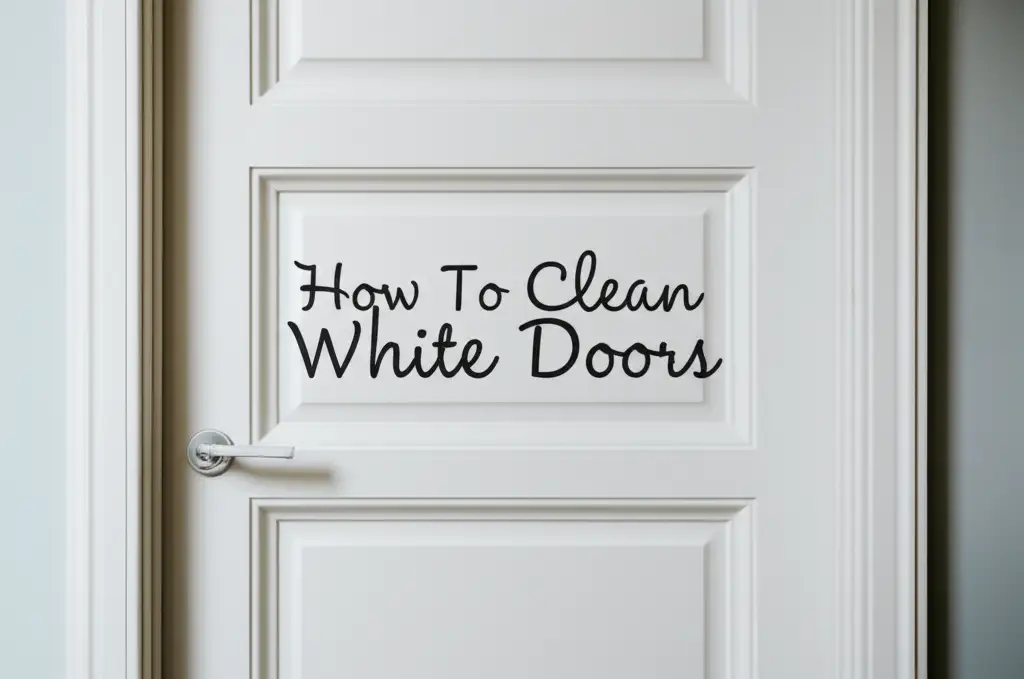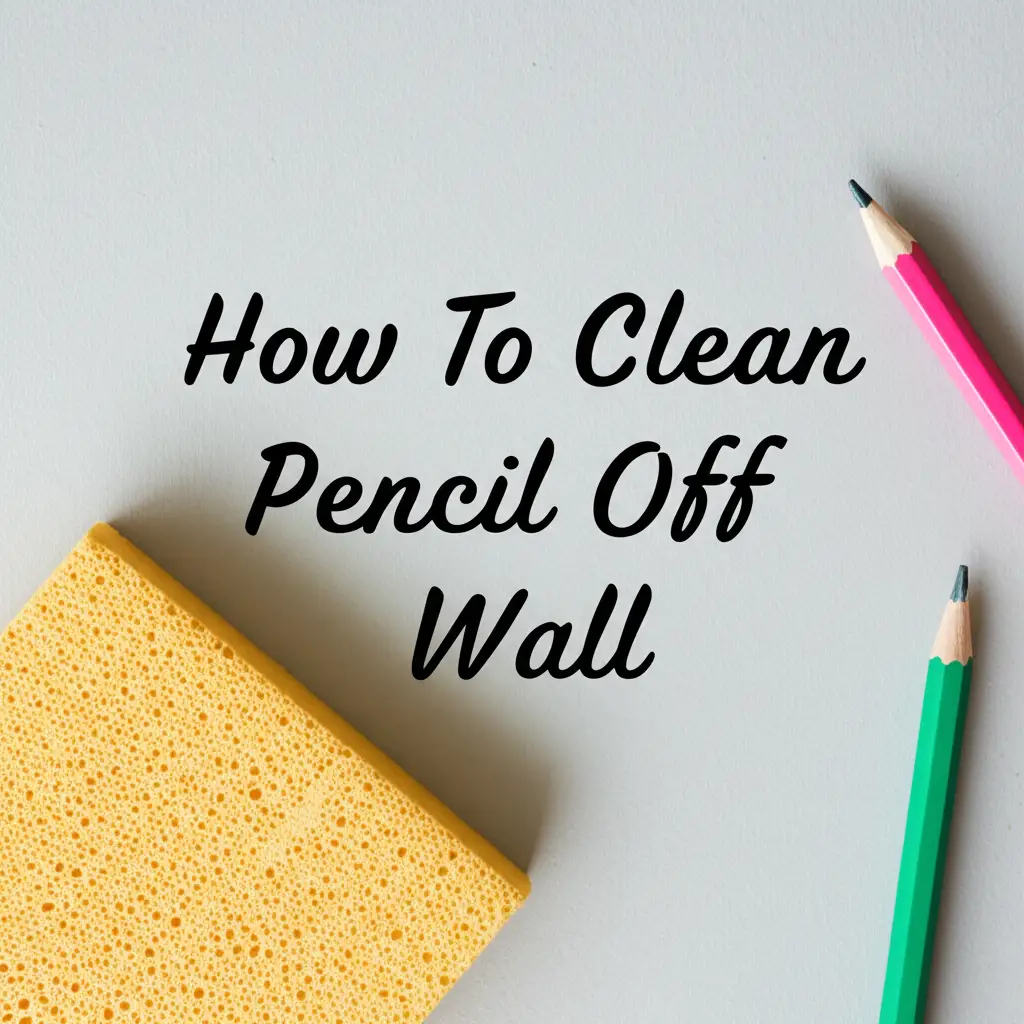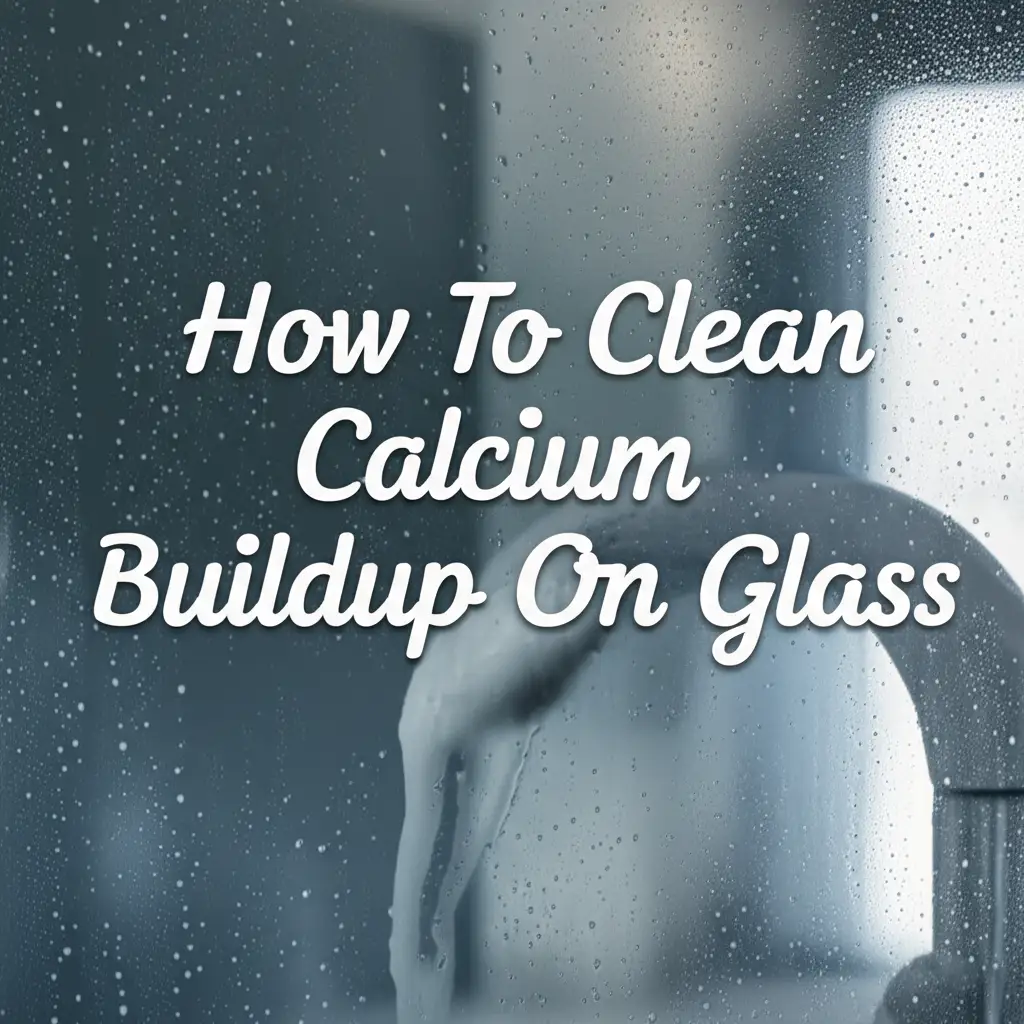· Home Cleaning · 18 min read
How To Clean White Doors

Restore Brilliance: How To Clean White Doors Effectively
White doors bring brightness and style to any home. They create a clean, crisp look. However, white surfaces show every mark and smudge easily. This makes regular cleaning essential to keep them looking their best. Dirt, fingerprints, and scuffs can quickly dim their appeal.
My guide helps you learn exactly how to clean white doors. I will show you how to tackle everything from everyday dust to tough stains. We will explore simple steps and powerful techniques. You will find practical advice to restore your white doors’ original beauty.
This article covers tools, methods, and specific care for different door types. Get ready to make your white doors sparkle once more.
Takeaway:
- Regular, gentle cleaning prevents dirt buildup on white doors.
- Use mild solutions like dish soap and water for everyday cleaning.
- Target stubborn stains with baking soda, vinegar, or a magic eraser.
- Different door materials need specific cleaning care.
- Avoid harsh chemicals and abrasive tools to protect your door’s finish.
To clean white doors, start with dusting. Then, wipe surfaces with a microfiber cloth dipped in warm water and mild dish soap. For tougher marks, use a magic eraser or a paste of baking soda and water. Always rinse thoroughly and dry the doors completely to prevent streaks. This maintains their bright, clean appearance.
Why White Doors Attract Dirt (and Why Cleaning Matters)
White doors are beautiful. They make spaces feel open and bright. Unfortunately, their light color shows dirt very easily. Every fingerprint, scuff mark, and dust particle stands out. Daily use causes smudges around handles. Foot traffic often leaves marks near the bottom. Even airborne dust settles on flat surfaces. Over time, these small imperfections add up. They can make your entire room look dull.
I find that regular cleaning keeps your white doors looking fresh. It prevents dirt from building up. Accumulated grime becomes much harder to remove later. Neglecting white doors can lead to permanent discoloration. They might start to look yellowed or dingy. This happens especially in high-traffic areas. Dirt and oils from hands stick to the paint. They can embed themselves deeply into the surface.
Cleaning your white doors also protects their finish. Dirt and abrasive particles can scratch paint over time. Proper cleaning extends the life of your doors. It keeps them strong and attractive for years. A clean door also contributes to a cleaner home environment. It feels good to walk through a bright, spotless doorway. My goal is to make this process simple for you. We will ensure your white doors remain a highlight in your home. Maintaining them adds real value to your living space.
Essential Tools and Supplies for White Door Cleaning
Having the right tools makes cleaning white doors much easier. You do not need many special items. Most supplies are probably already in your home. I always gather everything before I start. This saves time and keeps my cleaning flow smooth.
First, you need a few soft cloths. Microfiber cloths work best. They are very absorbent and non-abrasive. This means they will not scratch your door’s finish. You also need two buckets. One is for your cleaning solution, and the other for rinsing water. A soft sponge can help with tougher spots. Avoid abrasive scrubbers. They can damage the paint.
For cleaning solutions, mild dish soap is usually perfect. A few drops in warm water create a gentle but effective cleaner. I also keep white vinegar and baking soda on hand. These are natural powerhouses for more stubborn stains. A spray bottle can be useful for applying solutions. Finally, always wear protective gloves. This protects your hands from cleaning agents. It also keeps oils from your hands off the clean surface.
Gentle Cleaning Agents
My go-to cleaner for everyday dirt is warm water mixed with mild dish soap. This solution is gentle. It breaks down grime without harming the paint. You just need a small amount of soap. Too much soap can leave a residue. This residue then attracts more dirt. I use this mixture for general wiping. It removes dust and light smudges easily.
For a slightly stronger clean, consider white vinegar. Vinegar is acidic. It cuts through grease and helps whiten surfaces. You can mix equal parts white vinegar and water. Put it in a spray bottle. This mixture is excellent for slightly tougher spots. It can also help remove mild yellowing. Always test vinegar on a small, hidden area first. This checks for any adverse reactions.
Specialized Cleaners for Tough Jobs
Sometimes, you face really stubborn marks. A magic eraser is my secret weapon for scuffs and crayon marks. These sponges work by acting like very fine sandpaper. They lift marks gently. Use them with caution. Rub very lightly. Too much pressure can remove paint. Always test a magic eraser in an inconspicuous spot. You can also use it for small areas on your white stove top.
Baking soda forms a gentle abrasive paste. Mix it with a little water. This paste is great for set-in dirt or light stains. It lifts grime without scratching. Apply the paste with a soft cloth. Rub gently in small circles. Then wipe it clean. This works well for discolored spots. You can also use a similar method to brighten up white shoes. These simple items will help you keep your white doors spotless.
Your Step-by-Step Guide to Everyday White Door Cleaning
Keeping white doors clean does not have to be a big chore. Regular, light cleaning prevents dirt from building up. This saves you from tougher deep cleaning later. I follow a simple routine that works wonderfully. It ensures my doors always look their best. This process is quick and effective for everyday grime.
First, I always start by dusting the door. Use a soft, dry microfiber cloth. You can also use a feather duster. Begin at the top and work your way down. This removes loose dust and cobwebs. Pay attention to the top edge of the door frame. Dust often collects there. Do not forget the sides and the bottom. Dusting first prevents turning dust into mud when you wet clean.
Next, prepare your cleaning solution. Fill one bucket with warm water. Add a few drops of mild dish soap. Swirl it gently to mix. Take a clean microfiber cloth and dip it into the soapy water. Wring out the cloth well. It should be damp, not dripping wet. Excess water can drip and leave streaks. It can also damage the door if it seeps into cracks.
Now, wipe down the door panels. Work from top to bottom. Use gentle, even strokes. Pay extra attention to areas around door handles. These spots get the most contact and accumulate fingerprints. If your door has recessed panels, wipe those areas carefully. The detailing can trap dirt. I like to wipe the door frame too. Clean both sides of the door. Then, rinse your cloth in clean water. Wring it out again. Wipe the door once more to remove any soap residue. This prevents streaking.
Finally, dry the door completely. Use a separate, clean, dry microfiber cloth. Wiping dry prevents water spots. It also ensures the door is ready for use immediately. This routine takes only a few minutes. Doing it regularly keeps your white doors pristine. It saves you from having to tackle major cleaning tasks. This simple approach is my go-to for maintaining white doors.
Tackling Stubborn Stains and Scuffs on White Doors
Sometimes, everyday cleaning is not enough. White doors can pick up stubborn marks. These include scuffs, grease, crayon, and even ink. But do not worry, I have effective methods for each. The key is to address them quickly. Fresh stains are always easier to remove than old ones.
Before trying any strong cleaner, always test it. Pick an inconspicuous spot on the door. This could be the top edge or inside a closet. Apply a tiny amount of the cleaner. Wait a few minutes. Check for discoloration or damage. This step protects your door’s finish. It gives you confidence before cleaning the main surface.
Removing Scuffs and Marks
Scuff marks are common, especially from shoes or furniture. For light scuffs, a simple pencil eraser can work wonders. Just rub gently over the mark. Then wipe away the residue. For tougher scuffs, a magic eraser is your best friend. Dampen the magic eraser slightly. Rub it very lightly over the scuff mark. The trick is to use minimal pressure. Too much pressure can remove paint. The magic eraser lifts the mark without harsh chemicals. It is very effective. Remember to test it first.
Dealing with Grease and Grime
Grease and grime often build up around kitchen or bathroom doors. My go-to solution for these is white vinegar. Mix equal parts white vinegar and warm water in a spray bottle. Spray the solution directly onto the greasy spots. Let it sit for a minute or two. Then, wipe thoroughly with a clean microfiber cloth. Vinegar cuts through grease naturally. If the grease is very thick, you can add a drop of dish soap to the vinegar mixture. This boosts its grease-cutting power. For very tough grease, you might need to repeat the process. This method also works wonders for cleaning shower doors with vinegar.
Combating Yellowing
Over time, white doors can yellow. This is common due to sunlight exposure, cooking fumes, or age. Hydrogen peroxide can help reverse mild yellowing. Mix 1 part hydrogen peroxide (3%) with 2 parts water. Apply the solution with a clean cloth. Let it sit for a few minutes. Then, wipe it off thoroughly. Always rinse well. Another natural remedy is a baking soda paste. Mix baking soda with just enough water to form a thick paste. Apply the paste to the yellowed areas. Let it sit for about 10-15 minutes. Gently rub with a soft cloth. Then wipe it clean with a damp cloth. Finish by drying the door. This method is also useful for deep cleaning a white ceramic sink.
Cleaning Different Types of White Doors
Not all white doors are the same. Their material dictates the best cleaning approach. Understanding your door’s material is important. It ensures you clean it effectively without causing damage. I will explain the common types of white doors. Then, I will share the best way to clean each one.
Painted Wood Doors
Many white doors are painted wood. This includes solid wood or composite wood with a painted finish. Painted surfaces are generally durable. However, they can be sensitive to harsh chemicals. My advice is always to use the gentlest method first. Avoid abrasive cleaners or scrub brushes. They can scratch or dull the paint finish.
For regular cleaning, use mild dish soap and warm water. Dampen a microfiber cloth. Gently wipe down the door. Dry it immediately with another clean cloth. This prevents water spots and protects the wood underneath. For stubborn marks, follow the advice in the previous section. Use a magic eraser sparingly. Test any strong cleaner in a hidden area. Painted wood doors can absorb too much moisture. So, never let water sit on the surface for long.
uPVC and Vinyl Doors
White uPVC (unplasticized polyvinyl chloride) or vinyl doors are very common. You often find them as exterior doors, patio doors, or in bathrooms. These materials are highly durable. They are also non-porous. This makes them resistant to staining. They are generally much easier to clean than painted wood.
For uPVC and vinyl, I recommend a simple solution. Mix warm water with a squirt of mild dish soap. You can also use a specialized uPVC cleaner. Apply the solution with a soft cloth. Wipe down the entire surface. These doors can handle a bit more moisture. So, you do not have to be as careful about dampness. For tougher marks, a cream cleaner designed for uPVC works well. Avoid abrasive pads or harsh solvents like acetone. These can damage the finish. A good general cleaner for these surfaces is helpful, just like when cleaning iron doors.
Laminate and MDF Doors
White laminate and MDF (medium-density fiberboard) doors are also popular. They are often found in modern homes. Laminate doors have a protective outer layer. MDF doors are made from wood fibers pressed together. Both types are generally smooth. They offer a clean, contemporary look. They are usually more resistant to moisture than painted wood.
For laminate doors, use a damp cloth with mild soap and water. The laminate surface is quite forgiving. Wipe thoroughly. Then dry with a clean cloth. Be careful around edges and seams. Water can seep into these areas. This could cause the laminate to swell over time. For MDF doors, the approach is similar to painted wood. Use minimal moisture. A damp cloth with mild soap is best. Wipe clean and dry immediately. Both types benefit from prompt stain removal. This prevents marks from setting into the surface. Treating these carefully helps maintain their appearance, much like caring for glass shower doors.
Advanced Tips for Maintaining White Door Brilliance
Keeping your white doors looking bright and new takes more than just cleaning them when they get dirty. It involves proactive measures. I have learned a few advanced tips over the years. These help maintain their pristine condition. They reduce the frequency of deep cleaning. This saves you time and effort in the long run.
One key tip is prevention. Consider installing door stoppers. These stop the door from hitting walls or furniture. Each impact can leave a scuff mark. A simple rubber door stopper protects your door’s surface. Also, encourage family members to use door handles. This minimizes direct hand contact with the door’s main surface. Less direct contact means fewer fingerprints and oils transferring.
Regular dusting is another crucial step. Do this weekly, not just when you clean the door. Dust settles on all surfaces. On white doors, it becomes very visible. It can also combine with moisture or oils to create stubborn grime. A quick wipe with a dry microfiber cloth takes seconds. This prevents dust buildup from becoming embedded dirt. Pay attention to the top edges and recessed panels. Dust loves to collect in these hidden spots.
Think about applying a protective coating. Some manufacturers offer clear sealants for painted doors. These create an extra barrier. They make the surface smoother and less porous. This makes it harder for dirt and grime to stick. Cleaning becomes much easier. Always check your door’s specific material before applying any coating. Test in an inconspicuous area first. Not all sealants are suitable for every type of finish.
Do not forget the hardware. Hinges and handles can collect dirt too. They can also transfer grime to the white surface. I like to wipe down door handles every time I clean the door. For hinges, a damp cloth can remove surface dust. If your door hinges are very dirty, you might need a more focused cleaning method. Keeping hardware clean contributes to the door’s overall neat appearance.
Finally, consider seasonal deep cleaning. Twice a year, do a thorough cleaning. This involves moving furniture away from the door. You can then clean all sides and edges. This deep clean helps remove any accumulated grime. It ensures no hidden dirt is left behind. This comprehensive approach keeps your white doors looking consistently brilliant.
What to Avoid When Cleaning White Doors
When cleaning white doors, knowing what to avoid is as important as knowing what to do. Using the wrong products or techniques can cause damage. This damage can be hard or impossible to fix. I have learned from experience what works and what does not. My goal is to help you protect your beautiful white doors.
First, stay away from harsh abrasive cleaners. These include scouring powders or strong scrubbing pads. While they might seem effective for tough stains, they are too aggressive. They can scratch the paint or dull the finish. This leaves permanent marks. These scratches then trap more dirt, making the problem worse. Always choose soft cloths and gentle sponges instead.
Avoid highly acidic or alkaline solutions. These can strip paint or cause discoloration. Bleach is a common culprit. While it whitens, it can also yellow some types of paint over time. Especially be careful with painted wood. Strong chemicals can also make the surface porous. This makes it more prone to future staining. Stick to mild soap, water, vinegar, or baking soda for safe cleaning.
Do not use excessive water. White doors, especially painted wood or MDF, can absorb moisture. Too much water can cause the paint to bubble or peel. It can also lead to swelling or warping of the door material itself. Always wring your cleaning cloth well. It should be damp, not dripping. Dry the door immediately after cleaning. This prevents water from sitting on the surface.
Never scrub too hard. Aggressive scrubbing can remove paint. It can also create shiny spots on a matte finish. Use gentle, circular motions instead. Let your cleaning solution do the work. Give it a moment to break down the dirt. Then, wipe away softly. Patience is key when tackling stubborn marks.
Finally, avoid using oil-based cleaners or polishes unless specified. While some door types might benefit from specific treatments, universal use of oily products can attract dust. They can also leave a greasy residue. This residue can then yellow over time. Stick to water-based or natural cleaners for white surfaces. Following these “don’ts” helps you keep your white doors looking new and free from damage.
Frequently Asked Questions About Cleaning White Doors
How often should I clean my white doors?
I recommend cleaning your white doors at least once a week for light dusting. For a deeper wipe-down with a damp cloth and mild soap, aim for every two to four weeks. High-traffic areas like kitchen or bathroom doors might need more frequent attention, perhaps weekly. This regular maintenance prevents dirt buildup and keeps them looking fresh.
Can I use bleach on white doors?
I do not recommend using bleach on white doors. While it might seem like a good idea for whitening, bleach can actually cause some white paints to yellow over time. It can also be too harsh and damage the paint finish. Stick to gentler alternatives like white vinegar or baking soda for brightening and stain removal.
What is the best way to remove scuff marks from white doors?
For scuff marks, my go-to is a magic eraser. Dampen it slightly and rub very gently over the scuff. The magic eraser works by lifting the mark without harsh chemicals. For lighter scuffs, a standard pencil eraser can also be effective. Always test in a small, hidden area first to ensure it does not damage the paint.
How do I prevent yellowing on my white doors?
To prevent yellowing, regular cleaning is key. Sunlight and cooking fumes are common causes. You can try a solution of hydrogen peroxide and water for mild yellowing. A baking soda paste can also help restore brightness. Ensure good ventilation in areas with cooking. Consider UV-protective window films if doors get direct, prolonged sun exposure.
Are there specific cleaners for different types of white doors?
Yes, the best cleaner depends on the door material. For painted wood, use mild dish soap and water. For uPVC or vinyl doors, a specific uPVC cleaner or a stronger dish soap solution works well. Laminate and MDF doors also benefit from mild soap and water. Always avoid harsh abrasives or strong chemicals regardless of the door type.
What if my white door has textured panels or details?
Textured panels or detailed moldings can trap dirt easily. I use a soft-bristled brush or an old toothbrush to get into crevices. Then, wipe with a damp microfiber cloth. Make sure to rinse the brush or cloth frequently. This ensures you are removing dirt, not just moving it around. Finish by drying these areas thoroughly.
Conclusion
Keeping your white doors immaculate does not have to be a daunting task. We have explored simple yet effective strategies to maintain their bright appearance. From understanding why white doors get dirty to selecting the right tools and tackling stubborn stains, you now have a comprehensive guide. Regular, gentle cleaning with mild solutions like dish soap and water is your first line of defense. For those more challenging marks, natural powerhouses like white vinegar and baking soda, or the precision of a magic eraser, come to the rescue.
Remember to consider your door’s material. Painted wood, uPVC, laminate, and MDF all benefit from tailored care. Avoiding harsh chemicals and excessive moisture will protect your door’s finish and extend its life. By incorporating these tips into your home cleaning routine, you ensure your white doors remain a vibrant, clean feature. They will continue to enhance the beauty and brightness of your living spaces for years to come. Your home reflects your attention to detail. Let your sparkling white doors be a testament to that care. Ready to get started? Your brilliant white doors await!
- white door cleaning
- home maintenance
- stain removal
- cleaning tips
- DIY cleaning




